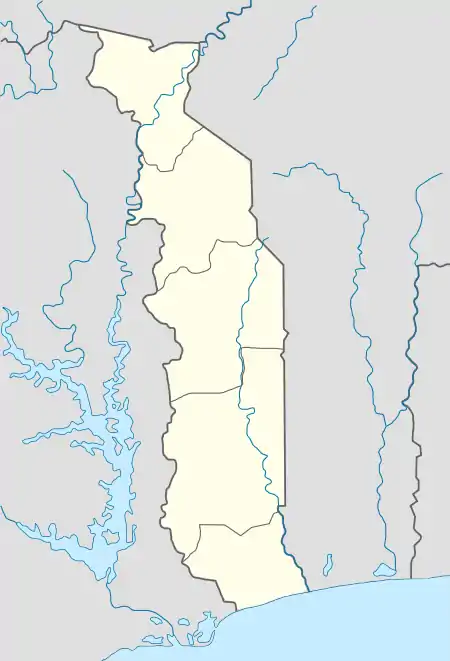Aného
Aného, previously known as Anecho is a town in southeastern Togo, lying on the Gulf of Guinea near the border of Benin. Founded in the late 17th century by Ane peoples fleeing from Asante attacks in Elmina (now in Ghana), Aného developed as a slave port and commercial centre. It was the capital of German Togoland from 1885 to 1887 and of the French occupation from 1914 to 1920. Aného remains an important intellectual centre for Togo, though it has not grown as rapidly as Togo’s other major cities. Pop. (2005 est.) 25,400. It is situated 45 km east of the capital Lomé, between the Atlantic Ocean and Lake Togo in Maritime Region. Historically it was known as Little Popo and it had a Portuguese slave market. The nearby town of Zebe became the second capital of German Togoland in 1887.[1] It gradually declined in importance after the capital was transferred to Lomé in 1897, a decline exacerbated by coastal erosion.
Aného | |
|---|---|
 A beach in Aného | |
 Aného Location in Togo | |
| Coordinates: 6°14′0″N 1°36′0″E | |
| Country | |
| Region | Maritime |
The town's main industries are farming and fishing, while it is still a centre for Voodoo. Notable buildings include Aneho Protestant Church (built in 1895) and Aneho Peter and Paul Church, cathedral of the Roman Catholic Diocese of Aného, dating from 1898. These buildings were together added to the UNESCO Tentative List on December 12, 2000, in the Cultural category.[2]
References
- "Togo". Retrieved 13 March 2018.
- Agglomération Aného-Glidji - UNESCO World Heritage Centre